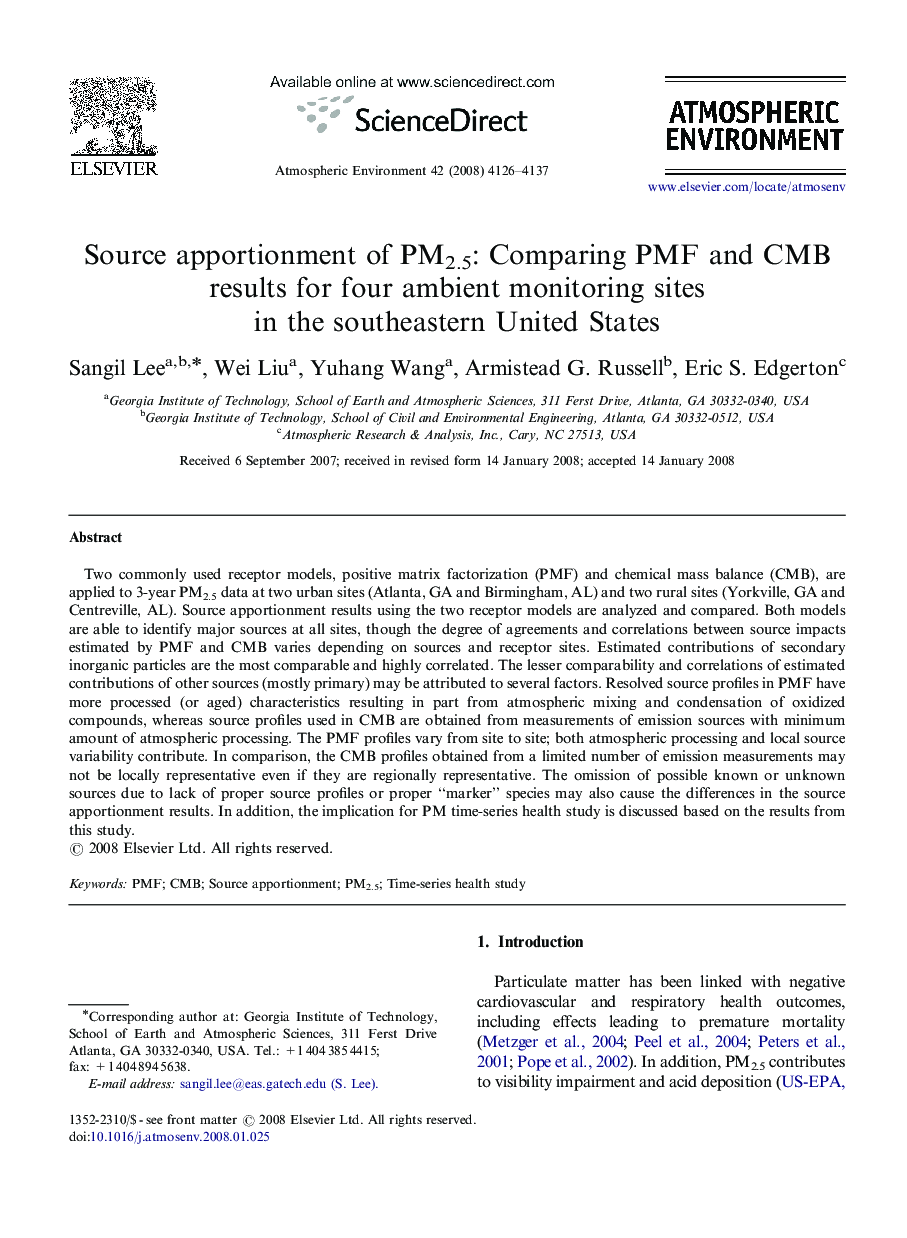| Article ID | Journal | Published Year | Pages | File Type |
|---|---|---|---|---|
| 4442907 | Atmospheric Environment | 2008 | 12 Pages |
Two commonly used receptor models, positive matrix factorization (PMF) and chemical mass balance (CMB), are applied to 3-year PM2.5 data at two urban sites (Atlanta, GA and Birmingham, AL) and two rural sites (Yorkville, GA and Centreville, AL). Source apportionment results using the two receptor models are analyzed and compared. Both models are able to identify major sources at all sites, though the degree of agreements and correlations between source impacts estimated by PMF and CMB varies depending on sources and receptor sites. Estimated contributions of secondary inorganic particles are the most comparable and highly correlated. The lesser comparability and correlations of estimated contributions of other sources (mostly primary) may be attributed to several factors. Resolved source profiles in PMF have more processed (or aged) characteristics resulting in part from atmospheric mixing and condensation of oxidized compounds, whereas source profiles used in CMB are obtained from measurements of emission sources with minimum amount of atmospheric processing. The PMF profiles vary from site to site; both atmospheric processing and local source variability contribute. In comparison, the CMB profiles obtained from a limited number of emission measurements may not be locally representative even if they are regionally representative. The omission of possible known or unknown sources due to lack of proper source profiles or proper “marker” species may also cause the differences in the source apportionment results. In addition, the implication for PM time-series health study is discussed based on the results from this study.
